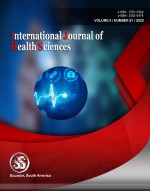Expressing Uzbek neologisms in Japanese and Korean languages and using them in literary works as a concept
Keywords:
neologism, scientific neologisms, political neologisms, technological, common neologisms, translation, Japanese, KoreanAbstract
In this article, along with the definition to the concept of neologism, neologisms and their translations and meanings, in Eastern languages, especially in Japanese and Korean languages, their meanings are widely explained on the basis of examples. At the same time, neologism was divided into species, each of which was given samples and studied. In addition, the usage of neologisms as a concept in fictions. And there are multiple concepts given as an example.
Downloads
References
Amanullayeva K. M. Badiiy asar konseptosferasi va asosiy konseptlarning tarjimada qayta yaratilishi. Samarqand-2020
O’zbek tili leksikologiyasi, Toshkent.O’zbekiston SSR “FAN” nashriyoti. 1981. 155b.
M. Irisqulov. Tilshunoslikka kirish. Toshkent “O’qituvchi” 1992.
М. М. Мirtojiyev O’zbek tili semasiologiyasi, Toshkent. “Mumtoz So’z” 2010.
Safarov SH.S. Pragmalingvistika. – Toshkent: O’zbekiston milliy ensiklopediyasi, 2008. – B 139.
Nuriddin Ismoilov, “Tansoqchi”. “G’afur G’ulom” 2012
Xaruki Murakami, “Qirg’oq bo’yidagi Kafka”. 12.09.2002.
Xaruki Murakami, “Norveg O’rmoni”, 1987.
Said Ahmad, “Qorako'z Majnun”, “O'zbekiston NMIU” 2001.
Fedorov, Alexander. Media Education: History and Theory. Moscow: ICO “Information for all”, 2015, 450 p.
Алефиренко Н.Ф, Проблема вербализации концепта: Теоретическое исследование. - Волгоград: Перемена, 2003. - С 95.
Красных В.В. Понятие концептосферы.- М.: Изд-во МГУ, 2003.- С 61.
Published
How to Cite
Issue
Section
Copyright (c) 2022 International journal of health sciences

This work is licensed under a Creative Commons Attribution-NonCommercial-NoDerivatives 4.0 International License.
Articles published in the International Journal of Health Sciences (IJHS) are available under Creative Commons Attribution Non-Commercial No Derivatives Licence (CC BY-NC-ND 4.0). Authors retain copyright in their work and grant IJHS right of first publication under CC BY-NC-ND 4.0. Users have the right to read, download, copy, distribute, print, search, or link to the full texts of articles in this journal, and to use them for any other lawful purpose.
Articles published in IJHS can be copied, communicated and shared in their published form for non-commercial purposes provided full attribution is given to the author and the journal. Authors are able to enter into separate, additional contractual arrangements for the non-exclusive distribution of the journal's published version of the work (e.g., post it to an institutional repository or publish it in a book), with an acknowledgment of its initial publication in this journal.
This copyright notice applies to articles published in IJHS volumes 4 onwards. Please read about the copyright notices for previous volumes under Journal History.
















